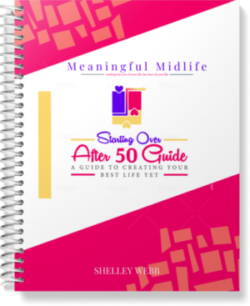Drive Safely: Auto Modifications & Tips for Seniors and Caregivers
By Michelle Seitzer for 101Mobility.com
Let’s get one thing straight: older drivers are safer drivers. 
They clock fewer miles, wear seat belts regularly, stay home in bad weather conditions, and avoid rush hour like the accident-prone plague it is. They’re not often charged with speeding, reckless driving, or driving under the influence.
Experts at Hartford Auto Insurance say that the number of accidents involving older drivers actually decreases as age increases. However, risk factors like medical conditions, medication usage and reduced physical function do increase the risk of accidents and injuries among this demographic.
When it comes to senior issues, the hottest buzz words are undoubtedly independence and dignity. These two qualities are clearly the foundation on which the ideal senior life is built, and nothing demolishes that foundation like losing the ability to drive.
It happens all the time, whether the doctor says “no more”, or a spouse, child, or caregiver’s concerns lead them to admonish an older driver to hand over the keys. In some cases though, seniors must give up driving because the physical act itself (even just getting in/out of the vehicle) becomes too difficult.
However, in the same way that hearing aids and bifocals can ease the frustrations rendered by age-related losses, car modifications can make driving safer and easier, extending a senior’s time on the road and granting them added years of freedom to come and go when and where they please.
Modifications That Make Driving Easier, Safer
Consider these simple car modifications, recommended by Hartford Auto (note: do not try these at home; consult a trained professional to install any of these recommended devices)…
- Cushions – improve your view of the road and rear-view reflections with an expert-approved cushion (in other words, your bed pillow won’t suffice). Ask an Occupational Therapist (OT) for recommendations on cushions that make the grade and ensure that your seat, belt, and air bags will not be hindered by the extra padding.
- Pedal Extenders – some of us will lose height as we age, and some are already vertically challenged. As it is 110% crucial that drivers can adequately reach the pedals, look into pedal extenders (if your vehicle does not already have an adjustable pedals option).
- Spinner Knobs – those who have experienced an amputation or have weakness in one arm could benefit from this device, which allows you to turn the steering wheel with one hand without compromising your safety and overall control of the vehicle. Check with an OT for advice.
- Hand Controls – sensory changes in your feet (perhaps due to an amputation or other surgeries) can impact your ability to safely operate the essential brake/gas pedals. Look into adaptive hand controls; you’ll need training on exactly how to use them before you make your first hand-control-guided trek.
Challenged by the very act of getting into and out of the car, or getting around once you’ve reached your destination? 101 Mobility offers the following options:
- Sedans – Two styles of auto lifts are available; the Bruno model lets you store your scooter/power chair either in the trunk or on the outside of your vehicle. Harmar lifts keep the scooter safely in tow at the car’s back end.
- SUVs – Again, Bruno and Harmar models allow interior/exterior auto lift storage of your mobility device. And, the power’s in your hands: raise or lower the lift at the touch of a button; as soon as the lift is raised, the power chair/scooter is secured.
- Vans – If you have a lot of cabin space in your van, you can pack your power chair there (or in the rear), safe from the elements.
- Trucks – Store the scooter in the cab or bed. Much like the SUV/van lifts, you can raise/lower your mobility device with ease.
- All cars – Bruno’s Turnout Seat can be installed in any vehicle, easing your entry to and exit from the vehicle. The seat can be lowered to the ground so you don’t have to climb into your vehicle. It also rotates so you don’t have to twist your way into the driver’s seat.
Photos and instructional videos on how these lifts operate are available on the 101 Mobility site; click here, then select “more details” under the lift of interest for videos/photos.
Also, an occupational therapist can be your best friend throughout the process of modifying your car, particularly in learning how to operate these new devices once you’re ready to get back on the road. Talk to your physician about working with an OT or getting a referral. Read more about how OTs can help older drivers (and their caregivers) here.
Tips for Safe Driving
Preserving that reputation as safer drivers goes beyond adding turnout seats and pedal extenders. Check out the CDC’s recommendations for protecting yourself and others on the road:
- Exercise regularly – it increases your flexibility and strength.
- Plan ahead – before you head out, know where you’re going and how you’re going to get there. And, choose a safe route (well-lighted, easy parking options, etc.).
- Don’t tailgate (a good rule of thumb for all drivers).
- Ask a friend to join you.
- Don’t drive distracted (i.e. talking on the phone, eating, turning up the radio).
- Have your eyes checked – and have a doctor review your medications to be aware of potentially dangerous side effects.
- Drive in the daytime; if possible, avoid driving in bad weather.
Always remember to buckle up – and, in the words my grandmother unfailingly utters to any of her family members before leaving the house, “Drive carefully.”
Michelle Seitzer is a freelance writer and editor who specializes in elder care content. Seitzer writes for a number of senior-related websites, including 101 Mobility.com, the nation’s leading sales, service and installation provider of a complete line of mobility and accessibility products and equipment that may be customized to suit each individuals’ home care needs. Learn more about the company at http://101mobility.com/ or email Michelle (mseitzer@101mobility.com).
I can’t help but adding a postscript to this great article and that is that when my daughter was 2 years old, as I was leaving for work, she would always yell “Be KaKa!” It was her way of saying Be Carefull. ~ Shelley 🙂
LEARN TO LOVE YOUR LIFE AGAIN
 Do you feel like you need to hit the REFRESH button on your life? Download our free guide and begin to create your best life yet!
Do you feel like you need to hit the REFRESH button on your life? Download our free guide and begin to create your best life yet!



Trackbacks/Pingbacks